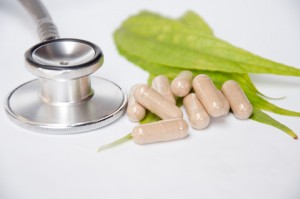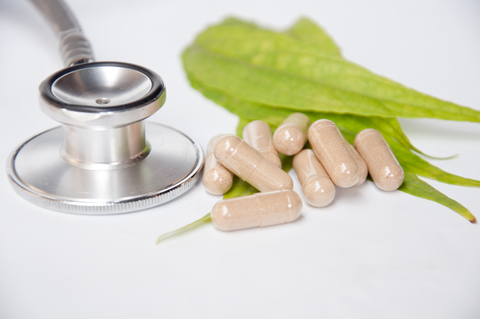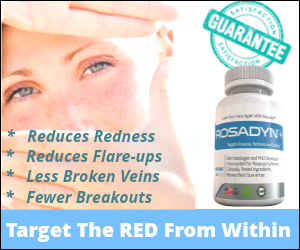Dermatologists Embrace Herbs To Decrease Rosacea Symptoms
Topical extracts have long been used to treat sensitive skin, rosacea skin and many other forms of inflammatory skin disorders. Until recently, most dermatologists have focused on using prescription topical treatments for rosacea. However, with proven efficacy and patient’s insisting on more natural treatments, dermatologists have started researching and treating rosacea sufferers with a combination of Western Medicine and Naturopathic Medicine.
In 2010, Dr. Fowler and colleagues published an article in the Journal of Drugs in Dermatology, “Innovations in Natural Ingredients and their Use in Skin Care”, that focused on the top natural treatments for rosacea and other skin disorders. Dr. Wu also published an excellent article highlighting natural extracts that had potent anti-inflammatory qualities and reduced many of the vascular symptoms of rosacea:
Treatment of rosacea with herbal ingredients. Wu J., Journal of Drugs in Dermatology, 2006 Jan;5(1):29-32.
Since rosacea is a chronic disease and many patients find prescription therapies unsatisfactory, they frequently turn to herbal ingredients for relief of their persistent facial redness. The most useful and frequently used herbal compounds include licorice, feverfew, green tea, oatmeal, lavender, chamomile, tea tree oil, and camphor oil. The utility of most of these herbs is based on their purported anti-inflammatory properties. Some of these herbs have proven effects, many have potential benefits, and some may aggravate rosacea. Due to the fact that many patients fail to inform their physicians about their use of herbal ingredients, dermatologists should be aware of what patients may be using and be able to advise them about the efficacy of these ingredients or the potential for adverse effects.
Tea Extracts Lead The Pack
Since the release of Dr. Wu’s publication in 2006, many rosacea sufferers have turned to all-natural topicals in an effort to find more effective symptom clearance and in order to stay away from topical and oral antibiotics. While natural alternatives are not necessarily better than medicinal pharmaceuticals, they do have a place in the treatment of rosacea…. alone or in combination with prescription-grade treatments.
Rooibos Tea (Aspalathus Linearis:)
Rooibos tea has long been used in traditional South African medicine, where it is claimed to treat all manner of inflammatory skin problems, making it a bright star in the natural rosacea treatment galaxy. Rooibos Tea has a strong anti-inflammatory effect through high concentrations of zinc and hydroxyl acid, a potent antioxidant. An additional unique feature of Rooibos Tea is that it also dissolves sebum, black heads and white heads for an excellent anti-acne effect. Its cleansing effect of can also help to minimize pore size as well.
Rooibos Tea Applications: Cleansers, Moisturizer, Rosadyn Facial Mist
Japanese Green Tea (Green Camellia sinensis)
Topical Japanese Green Tea lotion and cream are among the favorites for rosacea sufferers. The green tea derivatives epicatechin, epigallocatechin, epicatechin-3-gallate, and epigallocatechin-3-gallate possess well-documented anti-inflammatory and antioxidant properties that reduce blotchiness, facial redness and hyper-reactive skin. Japanese Green Tea at 2% or higher also helps repair the rosacea epidermis, strengthen and thicken this important outer barrier.
Japanese Green Tea Applications: Cleansers, Moisturizers, Anti-inflammatory Facial Mist, Facial Masks and Tea Bag Therapy
Japanese White Tea (White Camellia sinensis)
In terms of natural treatments, Japanese White Tea is very similar to Japanese Green Tea except for the fact that they contain higher concentrations of catechins and polyphenols — both responsible for their strong anti-inflammatory actions. This may also explain why Japanese White Tea not only treats rosacea redness but reduces the size and number of inflammatory papules (acne rosacea). Top quality cosmetic companies are now combining all three teas into serums (Rooibois, Green Tea and White Tea) in order to increase the overall effectiveness of these tea’s unique anti-inflammatory profile.
Japanese White Tea Applications: Cleansers, Moisturizers, Serums, Facial Masks and Tea Bag Thera
Chamomile (Matricaria recutita)
Chamomile is one of the most popular organic anti-rosacea treatments. Most use the German Chamomile because it does not contain allergens as do the other forms of Chamomile. The active constituents of chamomile include the terpenoids (bisoprolol, matricin, chamazulene) and flavonoids (apigenin, luteolin). Studies have documented the anti-inflammatory and soothing effects of creams containing chamomile in patients with various inflammatory dermatoses and rosacea. Chamomile instantly soothes rosacea-inflamed skin and with continued use can improve overall skin health and help reverse inflammatory symptoms.
Chamomile Applications: Cleansers, Gentle Toners, Gentle Astringents, Moisturizers, Creams, Lotions, Facial Masks and Tea Bag Therapy
Boswellia Leaf Extract
Boswellia Leaf is a potent anti-inflammatory and should go near the top of the list of natures offering for rosacea treatment. It is also one of the ancient and most valued herbs in Ayurveda. Boswellia extract has proven therapeutic benefits when it comes to skin and blood diseases. This amazing extract has also been cited as medicinal in the treatment of cardiovascular diseases, mouth sores, bad throat, bronchitis, asthma, cough, hair-loss, jaundice, hemorrhoids, syphilitic diseases, irregular menses and stimulation of liver. It is also diaphoretic, astringent, diuretic and acts both as internal and external stimulant. Modern medicine and pharmacology strongly point out to its use as an antiarthritic, anti-inflammatory, antihyperlipidemic (controls blood lipids), antiatherosclerosis (anticoronary plaque), analgesic (pain-reliever) and hepatoprotective (protects the liver)
Boswellia Leaf Extract Applications: Supplements, herbal extracts
You might have noticed that many of these natural ingredients are “anti-inflammatory”. This frequently attributed benefit is key to treating rosacea symptoms. Rosacea is associated with abnormal inflammation, so targeting this anomaly is crucial.
(more about inflammation and rosacea)
* caution do not place pure extract on skin.
Over the last 20 years, clinical and laboratory studies have identified the benefits of an array of natural ingredients for skin care. Consequently, a number of these ingredients and compounds are today being developed, used or considered not only for anti-aging effects, but also for use in dermatologic disorders. Certain ingredients, such as colloidal oatmeal and aloe vera, have been identified as beneficial in the treatment of psoriasis and atopic dermatitis, respectively, due to their anti-inflammatory properties. For combating acne and rosacea, green tea, niacinamide and feverfew are considered efficacious.

